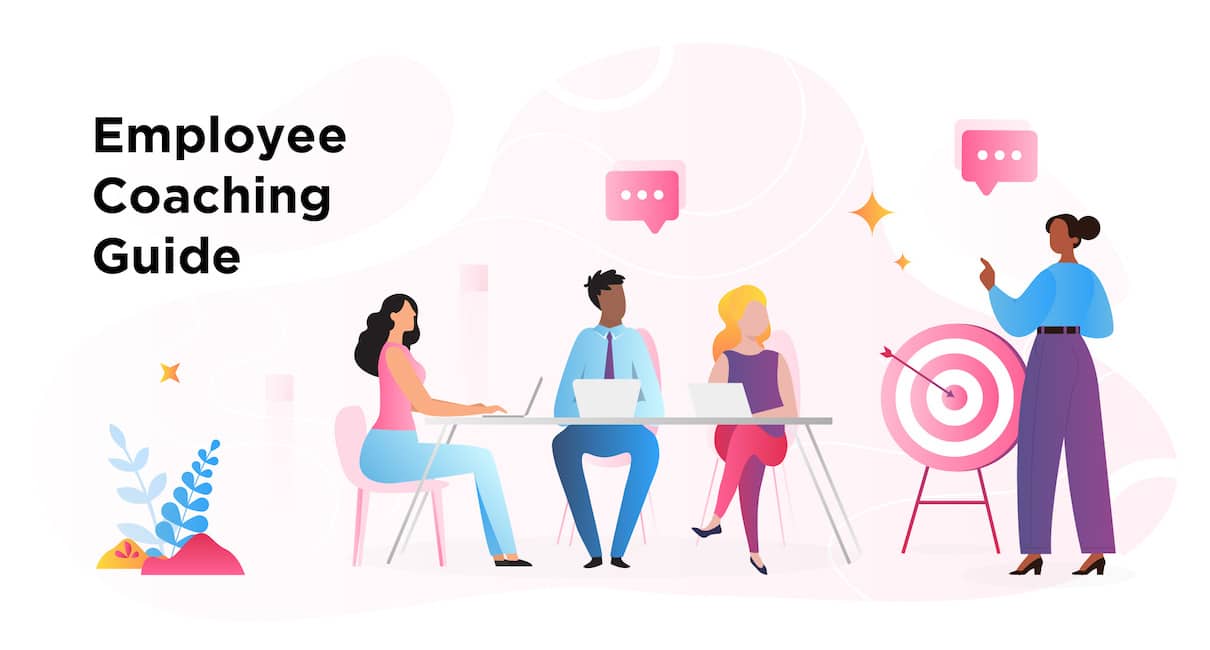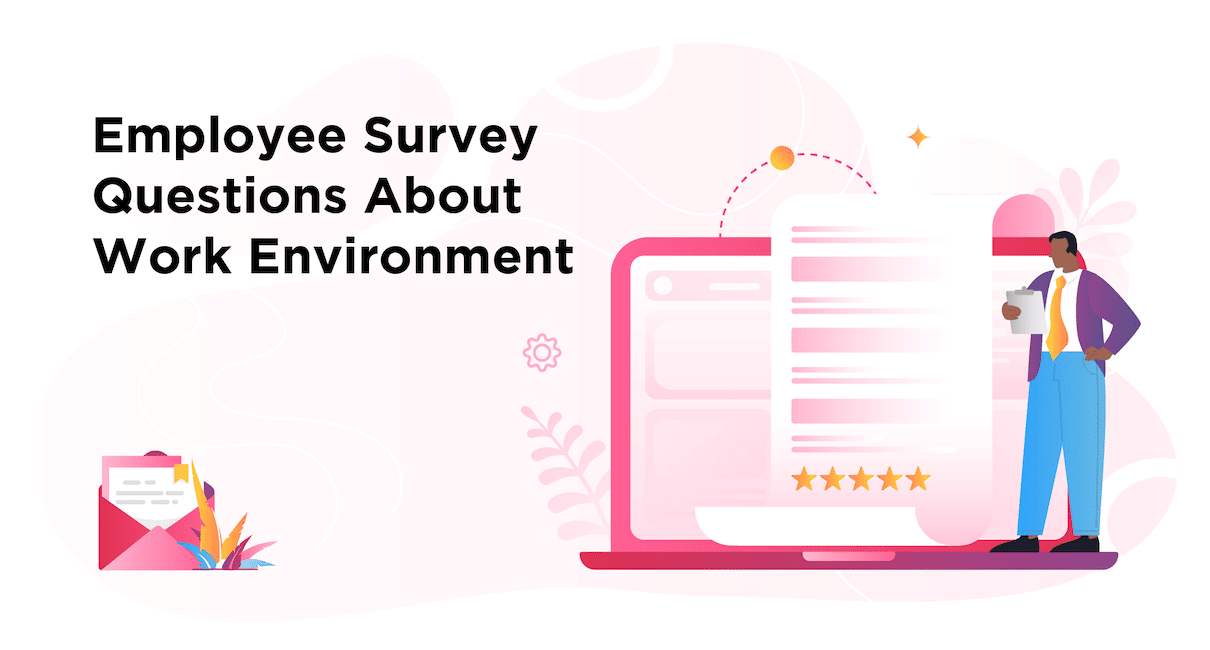Coaching in the workplace is just as important as in the playing field. When done skillfully, employee coaching can help employees reach their career goals and stay engaged. But before you can start playing ball, you’ll need to brush up on your coaching skills.
You don’t have to be a sports fanatic to know just how much a coach can make or break a team’s success.
A tough coach might push the team harder but cause burnout among the players—or inspire full-fledged resentment. On the other hand, a more laid-back coach can fail to provide enough guidance and cause confusion across the team.
Effective employee coaching, however, can have far-reaching benefits for your workplace—from greater employee engagement to customer loyalty. We’ll explore just why employee coaching is so powerful and how you can implement it in your workplace.
Engage staff with a modern internal comms tool.
Start a 14-day trial. No credit card is necessary. Zero risk.
What is Employee Coaching?
Employee coaching is the process of training employees to reach personal and company goals in the workplace. It’s also the first step to improving an organization’s performance as a whole.
Through employee coaching programs, managers and employees work together to create an action plan for reaching their goals.
This can be an informal arrangement whereby employees receive feedback and ask questions on a regular basis. Oppositely, a hands-on coach may ask employees to complete a coaching form and check in for progress reports.
Usually, the latter approach is used to address specific employee performance issues.
Overall, the focus of employee coaching is to maximize employee potential by providing staff with necessary resources and support for their professional growth.
Why is Employee Coaching Important?
The importance of employee coaching stems from its countless benefits for business performance, employee retention, customer satisfaction, and more.
A strong coaching culture keeps employees motivated and at the top of their game. Why? Because they know there’s always room for growth. Employees also begin to recognize that their management team will support them in achieving their goals.
Having this sort of support system boosts employee engagement via internal communications. It affects how staff interact with customers and colleagues, as well as their loyalty to the company.
If you’re still not convinced, here’s a lineup of the top employee coaching benefits according to the latest research:
- Higher profits
- Increased value for shareholders
- Greater customer satisfaction
- Boosts employee engagement
- Better regulatory compliance
- Improved talent acquisition
- Increased value for shareholders
- Greater productivity
- Increases employee retention
- Improved employee innovation
With these benefits in mind, it’s important to mention that an employee coaching program is as good as the participants. Some employees will not be open to feedback or have a desire to change. And coaching an employee with a negative attitude is tough.
On the other hand, some coaches may be too overbearing and give little breathing room for employees to learn and grow. The key is to find middle ground.
Moreover, you may also encourage managers to seek coaching and development as well. We’ll cover this next!
What is Leadership Coaching?
Just like employee coaching, leadership coaching can help address performance problems and/or help in professional growth.
Some scenarios where leadership coaching may be necessary include:
- Change of role: leadership coaching is often necessary when a senior leader is preparing to assume greater responsibility. Promoting an individual from Associate to Partner, is one example.
- Adopting new management practices: many organizations are recognizing that the world of work is changing, and that leaders need to adapt. Leadership coaching can encompass training that introduces senior staff to the latest management practices.
Of course, the nature of a C-suite role can often bring challenges for leadership coaching. Senior staff are often less receptive to receiving constructive feedback or suggestions on improving their performance.
To avoid this, it’s important to create a culture of employee feedback from the start, and normalize employee feedback to managers.
Build a Culture of Employee Feedback with ContactMonkey
With ContactMonkey’s embedded pulse surveys, you can take the first step to making feedback the norm across your workplace.
ContactMonkey’s internal communications software lets you easily embed engaging pulse surveys directly into employee emails. And you can do it right from Outlook or Gmail.
This way, you can incorporate feedback into your weekly communications and make it the standard across your workplace.
Not to mention, you can schedule your surveys to go out on a regular basis and make employee feedback the norm.
Step up two-way communication across your company with our employee feedback examples.
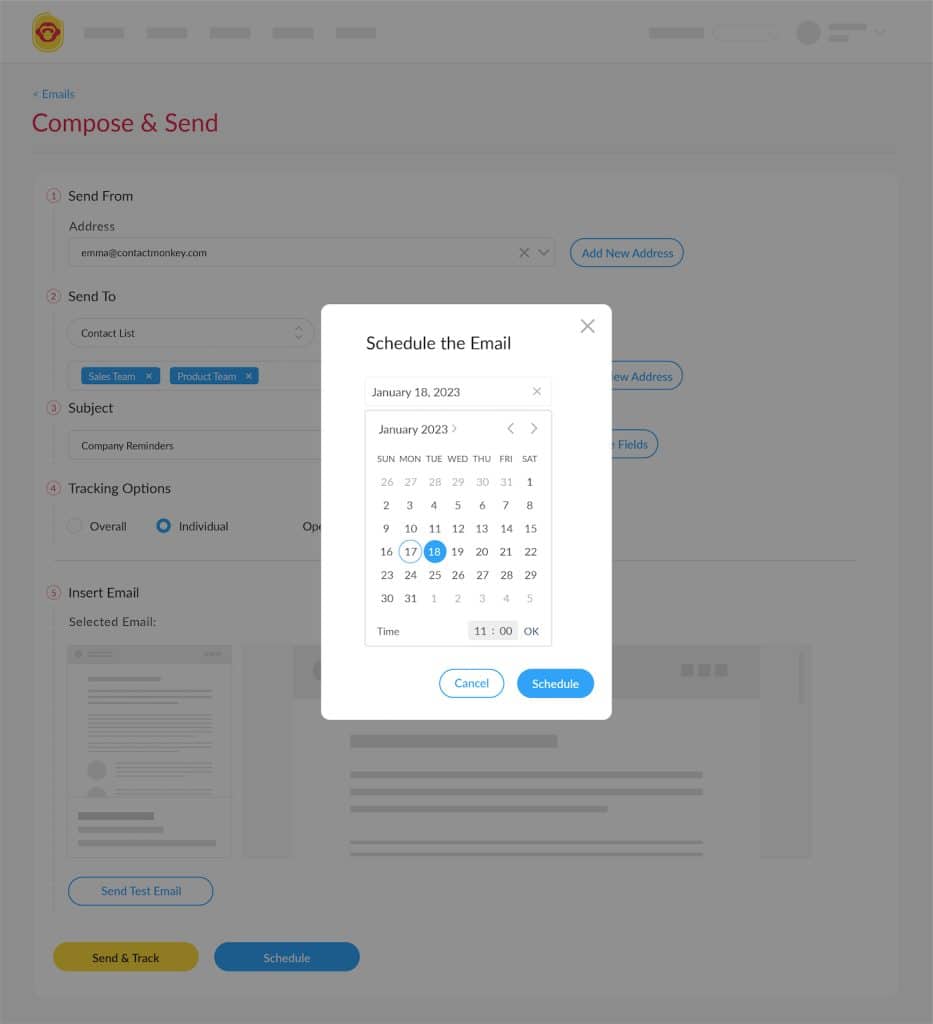
Impact of Coaching on Employee Performance
Regular employee coaching can help employees start tapping into their potential early on. It also brings performance problems into light when they’re still small.
Through effective employee feedback, you can help guide staff in the right direction and towards growth.
This can have a huge impact on employee performance. But if, and only if, your feedback is specific, empathetic, and reciprocal.
This means:
- Giving examples of what needs to change in your employee’s performance,
- Outlining steps towards change
- Encouraging staff to ask questions and give feedback to managers
You’ll see much better outcomes with this approach.
4 Essential Employee Coaching Techniques and Styles
The right employee coaching style and technique determine the effectiveness of your employee coaching program as a whole. So it’s worth taking the time to pick and perfect your craft.
The examples below can serve up some inspiration, but it’s important to experiment and pick the perfect combination.
1. Data-driven coaching
While this approach can be heavy on the numbers, it’s incredibly helpful when targeting specific, recurring problems with employee performance.
With this technique, coaches can use workplace engagement statistics from different types of employee surveys, such as a self evaluation or 360-degree survey.
Employee coaching software can also help in the process. Tools like 15Five and Asana use employee performance measurement and goal-tracking to provide coaches with hard data.
This way, coaches can more clearly identify the link between specific behaviours and business outcomes.
2. Creating a goals road map
The key here is having a visual outline of employee performance and progress.
This can take as little as having coaching conversations with employees and discussing their goals. In a more rigorous approach, it can involve using data and documenting objectives and progress using an employee coaching form. If your company uses employee handbooks, include possible paths for new employees to consider.
The end-goal is always to highlight where the employee currently stands and the steps needed to make progress.
A good coach should provide structure to this process. That means checking in on progress and helping to connect employee goals to the company’s broader benchmarks.
3. Giving (and asking for) regular feedback
Coaching and feedback go hand in hand. Whether you’re a hands-on, data-driven coach or a more laid back coach, gathering quality employee feedback is always necessary.
As mentioned earlier, for employee feedback to be effective, it needs to highlight specific areas for improvement. It also needs to recognize positive behaviours.
This way, employees know exactly what’s expected and can correct their course accordingly.
In order for employees to discard the idea that employee feedback means trouble, though, feedback needs to be a two-way street.
So start making sure you’re constantly asking for feedback as much as you’re dishing it out. This will help in building strong relationships with employees as well, which are essential to effective coaching.
Not sure what questions to use to gather employee feedback? Try generating ideas using ContactMonkey’s OpenAI ChatGPT integration to create new content for your emails. Simply write a prompt and edit the output for your audience.
4. Setting up regular progress follow-ups
This employee coaching technique can be part of both a formal and informal style. If there’s a specific issue you’re trying to help the employee address, a critical feedback path may be needed.
For instance, weekly follow-ups to discuss what steps an employee has taken to stay on track to improve their performance is an example of a more rigorous approach.
On the other hand, checking in on an ‘as-needed’ basis is part of a more flexible coaching style.
If you only need to follow up with a certain portion of employees, try using a custom email list to target your internal email campaigns. Using ContactMonkey’s List Management feature, you can create custom email lists—without IT—and integrate them with your Human Resource Information System (HRIS) like Workday and ADP, as well as Azure Active Directory, so your lists will update automatically.
Employee Coaching Examples
At the end of the day, much of your employee coaching style and technique will be influenced by the situation at hand. Let’s break down some common employee coaching examples to start.
1. Adapting workplace habits or behaviours
Consider an employee who regularly fails to meet deadlines, is late to meetings, and doesn’t contribute to team discussions. It’s the coaches’ job to encourage a change in these habits.
Employee coaches can start by asking employees to rate their own performance in a likert scale survey. Follow up with a one-on-one meeting where you can highlight problem areas in person. Then ask employees what resources they need in order to excel in their roles.
By asking employees for their input, it helps them see the coaching process as a collaborative effort.
2. Developing new skills
Many times, the need for employee coaching doesn’t stem from a specific problem. Instead, employees, or managers (or both), may simply want to develop new skills in order to grow in their role.
For instance, a marketing coordinator may want to expand their Google Analytics skills to streamline their tasks. Or they may want to boost their communication skills to share their employee engagement ideas better.
In this scenario, the coach should connect employees to online training modules, employee handbooks, or workshops for developing the desired skills.
For technical skills, they could also connect the employee with staff members who specialize in the given area.
3. Change coaching
While employers often go full throttle on onboarding and training new hires, internal transitions can be overlooked. Since it’s the same company, some consider it too minor of a change.
But a lateral move or a promotion also comes with a learning curve.
Effective employee coaching in this case will require regular check-ins with the employee. If you prefer to keep things informal, you can check in using pulse surveys embedded into employee emails.
With an interactive internal communications tool like ContactMonkey, employees can easily share what resources or support they need. And they can do it straight from their email.
After turning on commenting within your ContactMonkey email template builder, add survey questions like:
- “What additional resources do you need to do well in this new role?”
- “How often would you like to receive performance feedback?

4. Diversity and inclusion coaching
Employee coaching can be a powerful tool for promoting diversity and inclusion in your organization.
HR professionals, recruiters, and senior leaders are often the gatekeepers when it comes to growing diversity and inclusion in the organization. They need to be trained in equitable hiring practices, and recognize biases that exist in their hiring decisions.
Meanwhile, employees of all levels need to be trained in promoting inclusive workplace standards and behaviours.
Diversity and inclusion coaching may consist of providing training sessions during your virtual town hall. Or it can involve distributing diversity and inclusion policy resources in your employee newsletters.
With ContactMonkey’s email tracking software, you can even check how many employees clicked and opened your training resources.
Easily create employee coaching email templates.
Try ContactMonkey for 14 days. No credit card necessary.
Employee Coaching Templates
Think about a challenge or goal your business has faced. Whether it was increasing sales or improving user experience, you probably created some sort of roadmap towards achieving the objective.
The same logic applies to employee coaching. Visualizing employee coaching goals using a simple form helps build a practical roadmap to reach key objectives.
Here are a few employee coaching templates to help guide you:
1. General employee coaching template
This type of form is great if you’re just starting to implement employee coaching in your organization. It’s simple, straightforward, and allows both managers and employees to address a wide range of goals or challenges.
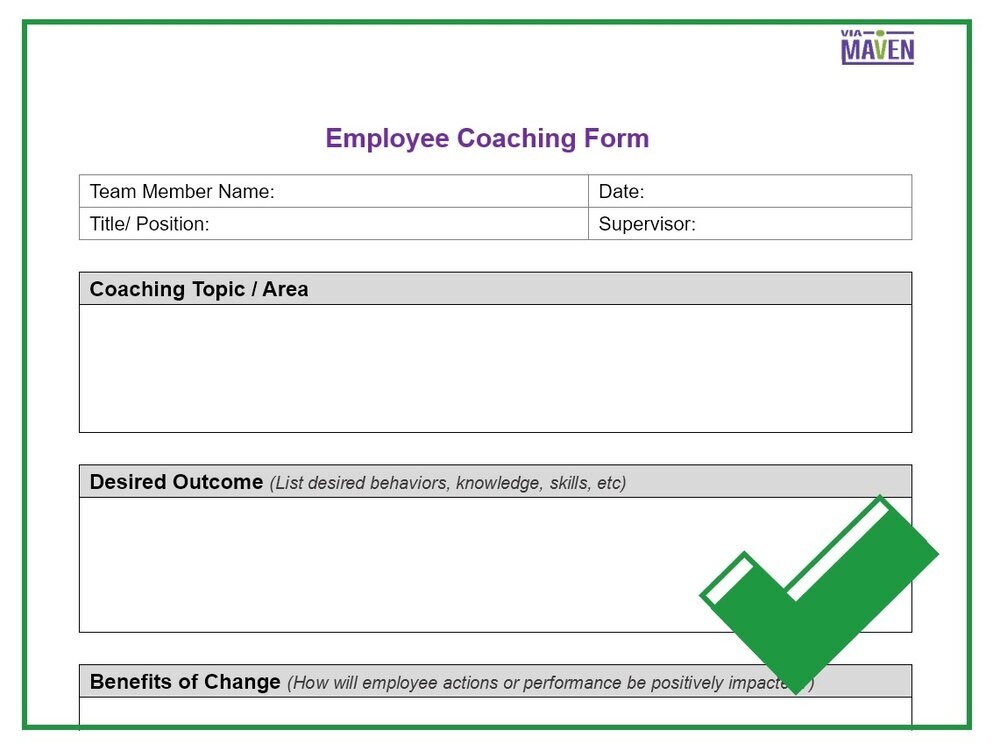
2. Targeted employee coaching template
This form is designed for a more hands-on approach to employee coaching. Employees are required to provide examples of their work effort towards achieving company goals.

3. Employee coaching template for workplace issues or challenges
While it’s better to be proactive about employee coaching, it’s also useful for when specific problems emerge. With this template, you can target specific issues and help your employee progress towards high performance.
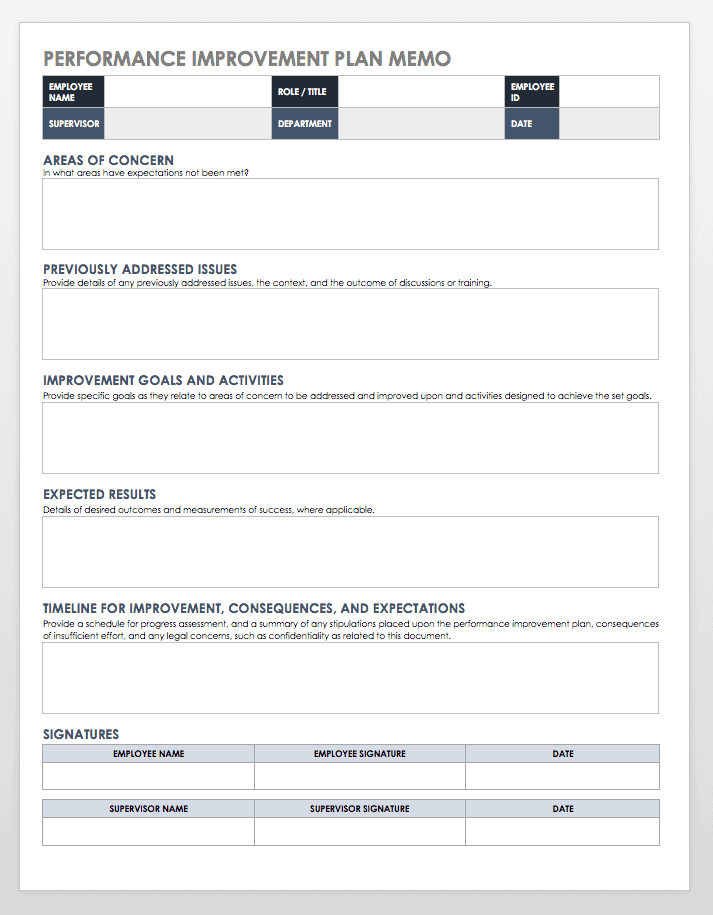
Streamline Employee Coaching Into Your Workflow With ContactMonkey
Great employers are always on the lookout for ways to help their teams succeed. By implementing employee coaching in your organization, you can be proactive about boosting employee performance. You’re also helping staff actualize their own career goals.
Looking to simplify employee coaching? With ContactMonkey’s internal communications tool, you can streamline the two most important components of effective coaching: communication and feedback. With easy ways to measure employee engagement, ContactMonkey makes it easier to navigate and coordinate employee coaching. Try it for yourself!

